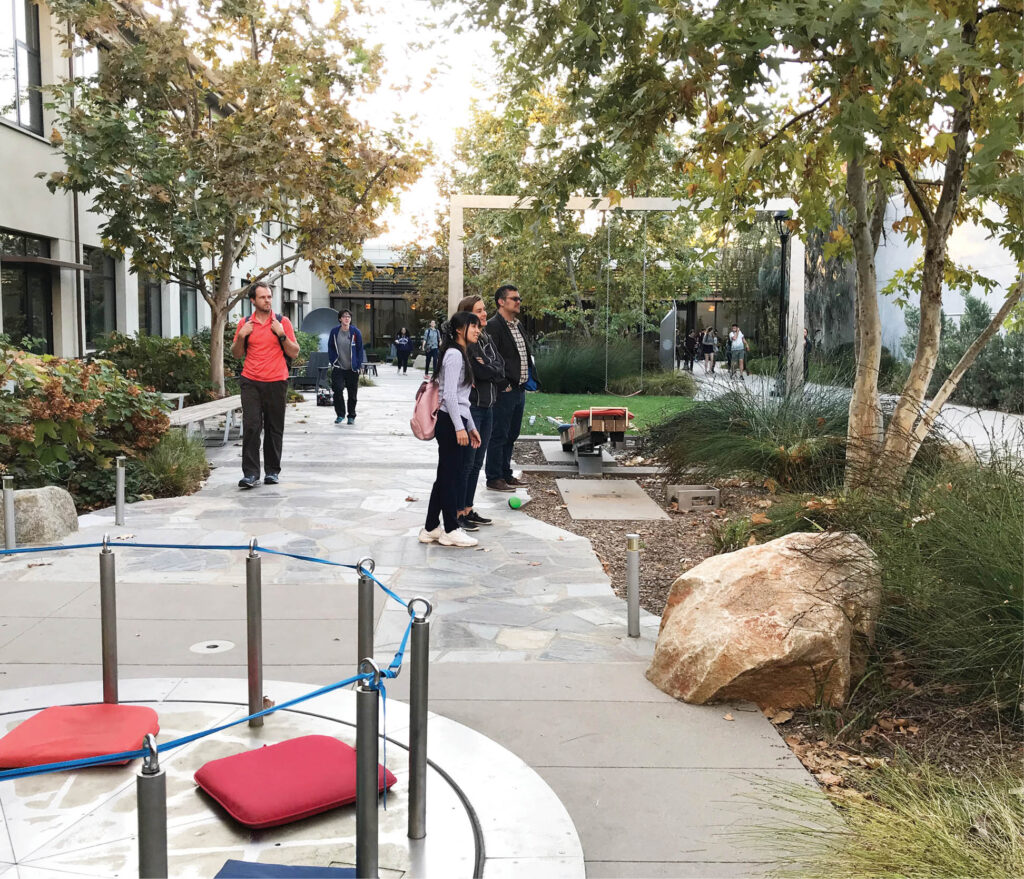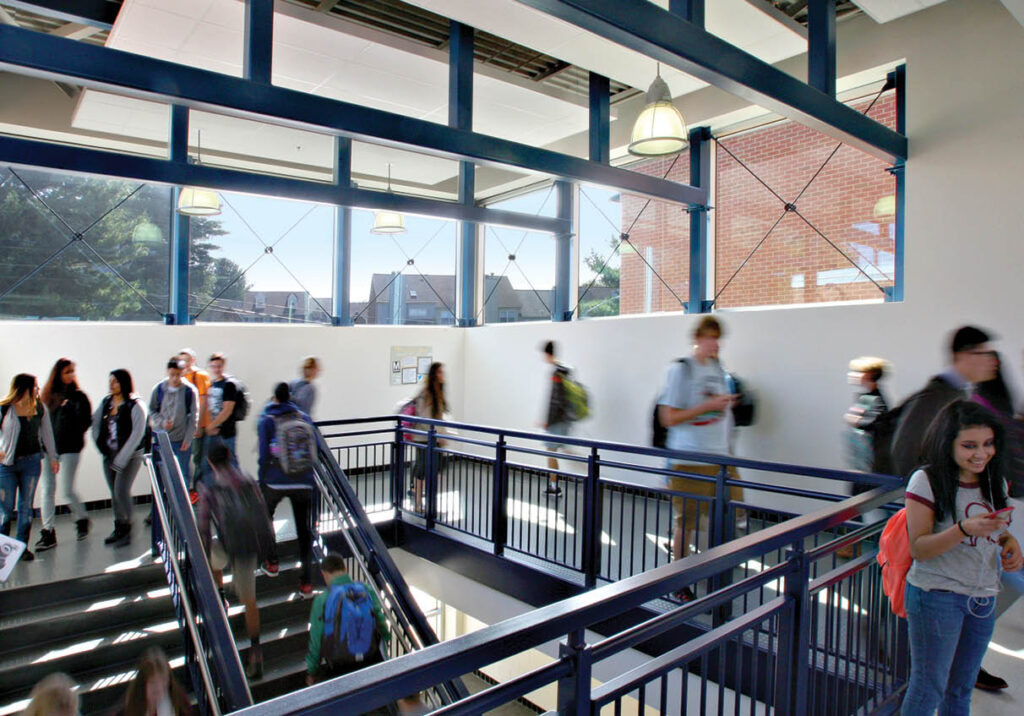Keeping Mental Health in Mind

Watershed planners have a saying: “Start upstream.” The idea is that it is easier to keep rivers and waterways healthy if we begin cleaning and directing rainwater before it reaches the river. The opposite “end-of-pipe” or “downstream” solution is to try to catch contaminants and control flows once they’ve already reached the river. Ecological watershed planning tries to restore nature’s ways of moving water, directing it to trees and plants to drink and remove pollutants and letting it soak into the earth to replenish aquifers and reduce flooding. Public health organizations like Salud America! use this metaphor to advocate for programs that address the social determinants of health and promote health upstream in the community rather than downstream in the hospital.
The leading causes of death and disability for youth now are mental health challenges. State and federal funding to support mental health is dramatically increasing. These programs, along with any efforts made to reduce the stigma of talking about mental health, are crucial. Yet, most funding seems directed toward downstream programs treating individual students one at a time. There is another way. We can nurture and support the entire school community if we reimagine the whole campus as a social and emotional safety net. We can create schools that heal.
Creating Upstream Support for Youth
Decades of research point to the social, emotional, and health benefits of being in or viewing nature, trees, and gardens. There has been a widespread movement for therapeutic gardens in hospitals and health care settings. More recently, interior designers are gaining momentum on trauma-informed design principles for health care, affordable housing, and—most relevant for school leaders—educational settings. Studies show that access to nature boosts our immune systems, reduces stress and anxiety to improve student learning outcomes, reduces student crime and disorderly conduct, and increases graduation rates and the number of students planning to attend college.
Sharon Danks, founder and CEO of Green Schoolyards America, says the COVID-19 pandemic amplified the momentum of the green schoolyards movement tenfold. Much of the focus has been on elementary schools, with great impact. It’s time for middle and high school campuses to get the attention they deserve. Because, while people of all ages need opportunities for play, joy, and belonging, teenagers have a uniquely strong need for nurturing and inspiring environments.
Neuroscientist Frances E. Jensen writes in The Teenage Brain: A Neuroscientist’s Survival Guide to Raising Adolescents and Young Adults that in adults, the hormone tetrahydro pregnanolone (THP) modulates anxiety to help us get through periods of intense stress. Teenagers have the same hormone, but in their brains, it amplifies anxiety. Teenagers are physically wired to feel greater stress and anxiety. So, the same stressors that impact all people living with trauma—mainly associated with sensory overload—are even harder on teens. And too often, they are actively discouraged from using community spaces and banned from doing the things that bring them the most joy—hanging out in groups, skateboarding, climbing, swinging, being loud, testing boundaries, and venturing, to name just a few. Perhaps no other age group is in as much need for healing and inclusive places than our 12- to 18-year-olds. Middle and high schools that were designed without classroom windows and with a focus on control do a disservice to these students and the teachers and staff who work with them.
Schools That Heal
I’ve spent the past 10 years translating this research into actionable strategies to help designers, teachers, parents, students, and school decision-makers transform their schools into healing environments. We start with the truth that every student, teacher, staff, and community member has different needs and that those needs change from moment to moment and day to day. This leads to two overarching planning approaches:
- Engage your entire school community in the planning and design process so that changes reflect the specific needs, cultures, and inspirations of your community. Community-led design can be facilitated by local community organizations or college or university faculty specializing in participatory design. If you’re new to this idea, start by asking your school district for a list of organizations and community partners already working with the district.
- Provide as much variety as possible in the size, location, use, and material and sensorial character of the spaces on your campus. Most campuses already have plenty of large spaces for events and athletics. Working with your community, identify indoor and outdoor spaces where students, teachers, and staff can go to be alone or in small groups for eating, learning, thinking, reflecting, playing, and healing.
More specific design strategies fall under three themes: nurturing a sense of belonging, providing nature-filled spaces, and inspiring awe. Within each of these themes, design strategies are organized by budget and time frame, from simple shifts in thinking to small-scale physical changes to large-scale physical changes—like major renovations and new buildings and facilities. Below are a few ideas to get you started.

Design Strategies
Nurture a Sense of Belonging
Shifts in Thinking
- Design places that reflect the natural context and your unique school communities.
- Use universal design principles to make sure everyone can equitably and comfortably access the physical spaces and educational and community programs your school offers.
- Ensure there is enough seating in lunch areas, lunch shelters, common areas, and enough furniture/equipment/seating wherever needed to avoid competition and hierarchy.
- Allow students to eat and study outside or leave campus during lunch and study periods.
- Encourage the school and the greater community to use the school grounds at all hours of the day and all days of the week.
- Hire or invite volunteers such as local artists, craftspeople, and business experts to work with and mentor students.
- Provide small cozy spaces—indoors and outdoors—for students, teachers, and staff to go to when they need to be quiet or alone.
Small-Scale Physical Changes
- Ensure the main entrance is clear and welcoming. If located off the street, consider signs, painted pathways, and other creative wayfinding strategies.
- Make it effortless for students, parents, and visitors to navigate into and through campus, especially to the main office, auditorium, community rooms, and athletic facilities.
- Make classrooms feel as homey as possible, with options for students who need to stand, pace, twist, or rock.
- Break up large outdoor areas into smaller areas with trees and gardens.
- Provide a variety of outdoor spaces and opportunities for walking, outdoor learning, eating, gathering, and resting.
- Place trees in view of classroom windows at a close enough distance to provide fascination.
- Check classrooms for distracting noises and take actions to reduce loud and echoing noises in larger spaces like the cafeteria, gym, and hallways.
Large-Scale Physical Changes
- Place the main entry along the street or corner and minimize fencing and the appearance of security controls. Convey warmth and welcome around the entire school perimeter.
- Organize campus spaces according to activity and noise levels, with clustered classrooms and quiet areas for learning separated from louder and more active areas.
- Provide indoor and outdoor learning opportunities for students to engage in hands-on experiential learning.
Create Nature-Filled Spaces
Shifts in Thinking
- Inside and outside, prioritize natural materials, patterns, and systems in all planning and design decisions.
- Work with teachers, administrators, and maintenance teams to uncover windows in classrooms, cafeterias, hallways, and common areas.
Small-Scale Physical Changes
- Provide opportunities for playing in nature such as climbing trees, building forts, scrambling over boulders, balancing on logs, walking over rough surfaces, swinging from ropes or branches.
- Specify natural, nontoxic, reclaimed, locally made, and regenerative materials throughout the campus.
- Engage local Indigenous communities, ethnobotanists, nature artists, and cultural anthropologists to plant, harvest, design, and/or build art pieces and structures with students.
- Bring nature inside by opening classroom views to trees and gardens. For windowless classrooms, place indoor plants and trees, small animals in terrariums, and mobiles or art made of natural materials or forms, or paint murals of natural scenes.
Large-Scale Physical Changes
- Design with nature and natural processes to take advantage of natural daylight and ventilation, use passive cooling and warming strategies, harvest rainwater, and manage stormwater.
- Reveal natural processes on campus by ensuring the building is a living laboratory where students can explore and learn from living systems.
- Add windows in classrooms, cafeterias, hallways, stairwells, libraries, music rooms, laboratories, staff and teacher break rooms, and offices.
- Create gardens that serve students, teachers, and the community. Examples include habitat garden, ethnobotany garden, rain garden, maze garden, reflection/meditation garden, strolling garden, or edible garden.
Inspire Awe, Curiosity, and Wonder
Shifts in Thinking
- Think of the designer as a facilitator for human and natural processes rather than the expert. Engage students, teachers, staff, and community members to find out what experiences bring them awe.
- Encourage students and model for them the gift of the small discovery, such as finding morning dew or a snail trail glinting in the sun, admiring the pattern of a leaf, or tracking when different birds or insects show up on campus each year.
Small-Scale Physical Changes
- Plant native trees and habitat gardens to attract birds, butterflies, and other fascinating creatures.
- Work with local and Indigenous artists, designers, ecologists, and community members to create place-based and culturally relevant artwork.
Large-Scale Physical Changes
- Aim for artful, inspiring, and fascinating design decisions at every opportunity.
- Hire local and Indigenous artists, designers, ecologists, and culture-bearers to find unique ways to reveal and celebrate the site’s natural and cultural histories.
What message do we want to send to our teens and pre-teens? Campuses filled with nature and calming spaces let students know that we care about them and the future of our planet. Transforming your school can change the way students think of themselves and the way they interact with the people and neighborhoods around them. Restorative middle and high school environments can invite and build a broad community around our adolescents; improve the quality of the neighborhood; reduce teenagers’ anxiety and aggression; and make them feel safer, more hopeful, and valued.
Claire Latané is an associate professor and chair of the department of landscape architecture in the College of Environmental Design at Cal Poly Pomona and the author of Schools That Heal: Design with Mental Health in Mind.
References
Li, D., & Sullivan, W.C. (2016). Impact of views to school landscapes on recovery from stress and mental fatigue. Landscape and Urban Planning, 148(4), 149–158. DOI:10.1016/j.landurbplan.2015.12.015
Matsuoka, R.H. (2008). High school landscapes and student performance [Doctoral thesis, University of Michigan]. deepblue.lib.umich.edu/handle/2027.42/61641
National Institutes of Health. (2022). 2022 National Healthcare Quality and Disparities Report. ncbi.nlm.nih.gov/books/NBK587174
